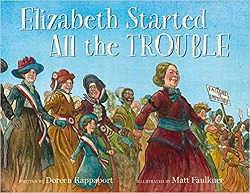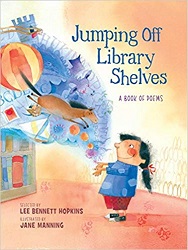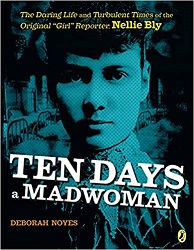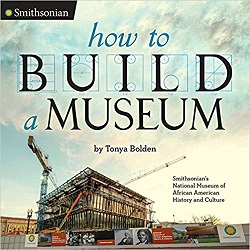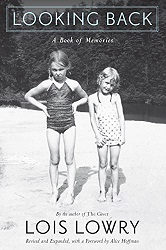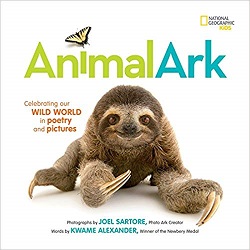Review of Wet Cement, by Bob Raczka
A Mix of Concrete Poems
by Bob Raczka
Roaring Brook Press, New York, 2016. 44 pages.
Starred Review
Bob Raczka explains what’s going on in this book in a note at the front:
I like to think of poems as word paintings. A poet uses words like colors to paint pictures inside your head.
In concrete poems, or shape poems, the words also paint pictures on the page. The poet arranges words in the shape of the thing the poem is about or in a way that emphasizes the poem’s meaning.
But here’s what’s really cool: by cleverly arranging individual letters, you can also paint a picture on the page with a single word. In this case, the letters become your colors.
In this book, I’ve done both. In the title of each poem, I’ve created pictures with letters. In the poems themselves, I’ve created pictures with words.
Besides showing kids what concrete poems are, this book gets the reader looking at things in new ways. I love the title example of calling the book of concrete poems Wet Cement and having the words pictured coming out of a cement mixer.
An example I can easily explain is his poem “Hopscotch.” In the title, the nine letters of “Hopscotch” go up the page in place as if in a hopscotch grid. On the next page, the twelve words of the poem go up the page in the same format.
The title of the poem “Clock” places the letter L inside the letter O looking like a clock. The poem has these words in a circle like the numbers of a clock: “The clock on the wall says it’s five ‘til three but”
Then the hands of the clock, appropriately placed, use the words: “the kids in my class say it’s five ‘til free.”
There’s lots of cleverness here. The poems are short and sweet and don’t look difficult. They’re at least not difficult to understand, but get you looking at the objects in new ways.
This book will definitely spur kids to try to create their own concrete poems. They may discover it’s harder than it looks!
But I like the way the ending poem, “poeTRY,” invites experimentation (and these lines are centered):
poetry is about taking away the words you don’t need
poetry is taking away words you don’t need
poetry is words you need
poetry is words
try
Find this review on Sonderbooks at: www.sonderbooks.com/Childrens_Nonfiction/wet_cement.html
Disclosure: I am an Amazon Affiliate, and will earn a small percentage if you order a book on Amazon after clicking through from my site.
Source: This review is based on a library book from Fairfax County Public Library.
Disclaimer: I am a professional librarian, but I maintain my website and blogs on my own time. The views expressed are solely my own, and in no way represent the official views of my employer or of any committee or group of which I am part.
What did you think of this book?


